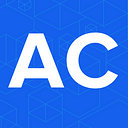Scaling Keep3r with Chainlink

Keep3rs role in the ecosystem is simple, help coordinate keepers and jobs for better overall system health.
As with any ecosystem, there are small jobs, that might not require as high security, and there are critical jobs. Keep3r’s niche has been the small to medium sized jobs, these are for organizations that might not have funds available yet, or simply want to experiment about what they build.
To use a comparison, when you are starting to build a small business, you are happy to store client payments in your safe at work. If you grow that business to a fortune 500 company, that is no longer sufficient and you need much higher security and fault redundant systems.
The fortune 500 company needs Chainlink, highly secure, always available, and fault tolerant.
In an ideal world, so does the startup, but realistically, they need something smaller, slightly more agile, and they understand, this comes with trade offs.
Keep3r & Chainlink play a similar role, but in very different market segments.
Keep3r was built with the R&D startup in mind. Chainlink was built with the fortune 500 in mind. And yet, thanks to composability, here we can offer both.
Separating the two however, means that eventually, when that startup grows into the fortune 500 company it is meant to be, it needs to redo all its processes to migrate to Chainlink, what if it didn’t have to? What if the interfaces and integration could simply be upgraded with the flip of a switch (or transaction in this case).
Keep3r flexibility with Chainlink security and redundancy.
Why Chainlink
Chainlink nodes have a proven track record as secure and reliable infrastructure for various computations like Keep3r jobs. Chainlink nodes are security-reviewed, Sybil-resistant, and operated by DevOps teams with decades of experience running mission critical infrastructure. Notably, the Chainlink Network stayed up during the recent unexpected Ethereum hard fork and subsequent Infura outage, providing further proof of its reliability.
The Chainlink Network also has a working reputation system, with the performance metrics of nodes actively being recorded on-chain for over a year now. This provides an immutable record of each node’s historical performance and is something we wanted to utilize for how Keepers are chosen for their role in maintaining key functions within the defi ecosystem.
What’s Next
In order to guarantee the reliability of the Keepers used by the defi ecosystem, Chainlink node operators will eventually start to run a growing number of key keeper jobs, leading to a network where the most relied upon keepers come to meet the high standard for security, reliability and sybil-resistance provided by Chainlink. Existing Keepers who have already performed a substantial number of jobs become eligible to become Chainlink node operators for the purposes of upgrading their role as a Keeper.
As Keepers upgrade to become Chainlink node operators they will also transition to the use of LINK, migrating their payment and staking methods to LINK, providing the same strong cryptoeconomic guarantees that power all Chainlink oracles. With the new agnostic Chainlink payment rails, these KP3R to LINK swaps can be done frictionlessly.
I believe the use of Chainlink will help scale the reliability and security of a keeper by making them into Chainlink oracles, so that they can be relied upon to trigger higher value transactions, even during the most volatile market conditions. Through Chainlink, developers will have access to more reliable and secure infrastructure for the automation of their transactions, which is the original goal I set out to accomplish.
I am excited to work with the Chainlink team on what I have high hopes will evolve into the Chainlink Networks own keeper functionality.
